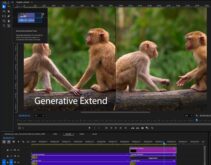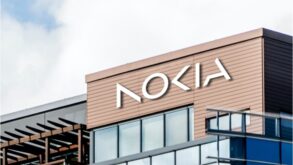Whenever I shoot a live performance, I have an internal debate about which functions to perform manually and which to let the camera perform. Obviously, the panning and zooming is my job; the question is whether I also take on focus and/or exposure. I shot my fifth Nutcracker season just before Christmas, which adds up to about 20 shows total, and I actually reached some clarity on this debate.
What’s great about the Nutcracker is that after the last show, all the primary dancers come to our house (it’s my wife’s dance company) and watch as many shows as they can cram in during the 3–4 hour party. I shoot the event with two cameras, my Sony HDR-FX1 as the static back camera and my Canon XH A1 as the close-up camera following the action. The dancers invariably want to see the XH A1 tape—no surprise there—and I enjoy it as well, not only for the pleasure that the dancers get from seeing the fruits of their labors but also for the critical look at my own shooting skills. Before this year’s show, I also looked back at the first Nutcracker that I ever shot, back in 2005 with my venerable Sony VX2000.
OK, let’s get back to the manual versus automatic exposure and/or focus. In an interview situation, I’ll go manual on both exposure and focus because you can pretty much set them and forget them. With a fast-moving ballet, it’s much more of a challenge: Not only is following the action harder, but manual operation is much harder as stage lighting changes, and automatic operation can be much less reliable.
For example, when I first started shooting my wife’s ballets, the shows were primitive, as was my camera work. For the shows, the ballerinas were in simple white dresses, dancing against a plain black curtain, and the show was filmed on a high school stage with uneven, harsh lighting—a recipe for disaster. For me, I was shooting in autoexposure mode, and the dancers were so blown out, they looked like ghosts floating across the stage. That’s what I saw when I looked at the video of the 2005 show. As a result, I learned how to use zebra stripes and started controlling exposure manually.
My wife’s costumes and sets improved, using earth tone-colored backgrounds that dramatically reduced the contrast ratio between the dancers and the background, making exposure less of an issue. However, the black background remained during the snowflake scene, and my wife added Christmas trees with lights and twinkling stars on the background. As I followed the dancers across the stage, this drove the autofocus on my Canon XH A1 crazy, making it totally unreliable. The result was awful footage, which meant relying solely on my Sony back camera for the DVD (which stayed in autoexposure and autofocus mode for the entire show). This brings us to this year’s show. Faced with the same auto/manual trade-offs, here are the factors that I considered when choosing which route to take.
First, I considered what I did well versus what the camera does well, understanding the trade-offs that both approaches entail. With exposure, I shot one show manually and another using autoexposure in spotlight mode. For the most part, when I went manual, there were no blown-out dresses—a la 2005—which I really liked. On the other hand, when the prima ballerina was under a bright light, to keep her from blowing out, exposure had to be set to where most of the other dancers were simply too dark for comfort.
In auto mode, there was an occasional blown-out outfit, but the effect was much less obvious than in the 2005 video, the result of the improved set and superior camera gear. Plus, overall exposure of the complete stage was more balanced—fewer dancers dancing in the dark.
In addition, the automatic adjustments made by the camera were much more subtle than the aperture adjustments that I made manually, which often made it appear like someone was turning the lights up or down.
My sweet 13-year-old daughter, bless her soul, even pointed this out to the crowd at the party, asking, “Dad—what’s up with the lights?” I realized then that when evaluating whether to go manual or auto, the most important perspective is that of the viewer, not my personal focus on avoiding blown-out dresses at all costs. Clearly, the audience cared more about perceptible shifts in brightness than a little loss of detail. As much as it hurt to say it, the camera was better at exposure control than I was.
On the other hand, in the snowflake scene, autofocus wasn’t working, so it was time to go manual, which isn’t as easy as it sounds. After all, I’m shooting from the back, 100′ from the stage, with only a 2.5″ LCD panel for framing and focusing. So before the last show, I reacquainted myself with the XH A1’s peaking controls. If you’re not familiar with peaking, it’s a camera function that paints sharp edges around objects that are in focus. On the XH A1, you enable/disable peaking via a button on the camera body. Operation is simple: You follow the action, adjusting focus so that the objects that you’re following have these sharp edges.
For the last show, I abandoned zebra stripes for peaking controls, allowing both the camera and me to do what we do best. The result was the best shoot yet.
 Streaming Learning Center Where Streaming Professionals Learn to Excel
Streaming Learning Center Where Streaming Professionals Learn to Excel








